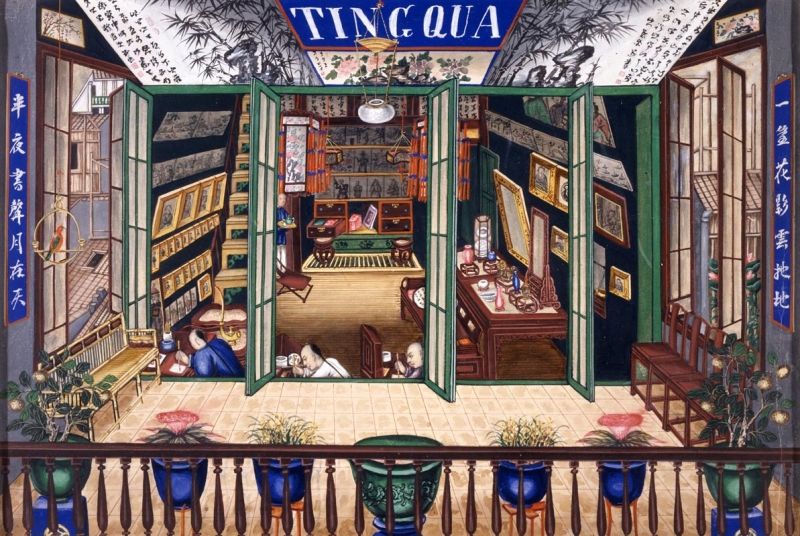
Studio of Guan Lianchang, also known as Tingqua (active 1830s-1870s) Guangzhou (Canton), mid 19th century.
To fill the numerous orders, it was common for an established artist to employ other painters and apprentices to help. Seen here are three such helpers working by the windows. It is also interesting to note that although the works produced are in western style, the painters are holding their brushes in the traditional Chinese manner. The pots in the foreground appears to be products of the nearby Shiwan pottery.
Chinse trade paintings artist active in Canton during the best part of the 19th century.
His studio was perhaps the most prolific source of Chinese export painting during the nineteenth century. He was one of the most celebrated Chinese export artists at the time. His watercolors in the bird-and-flower genre, port scenes and interiors were in popular demand. Located at 16 China Street, Guangzhou, the school specialized in gouache and watercolor paintings influenced by Western artistic traditions.
Tingqua was from a family of Chinese artists, each of whom were recognized for there skills in painting scenes suitable for the export market. His father, Guan Zuolin, often known by his western name, Spoilum, was the first identifiable artist of the Cantonese export school. Tingqua was also the younger brother of Lamqua.
Around 1855 a substantial collection of Tingqua paintings was brought back to the United States by the American China trader Augustine Heard which was instrumental in introducing this art to America. These are now located at the Peabody Essex Museum, in Salem, Massachusetts.
Characteristics of Tingqua's style and technique is that the sea is denoted by regular parallel lines, sometimes with ripples in the foreground. Trees was represented as thick clusters of yellow-green leaves. Above all, Tingqua's work is perhaps most recognized for its exquisite characterization of daily life and for its exceptional detail, precision of brushwork and concentration upon light effects. In all his art, each scene beautifully displays the importance of world trade with China.
A